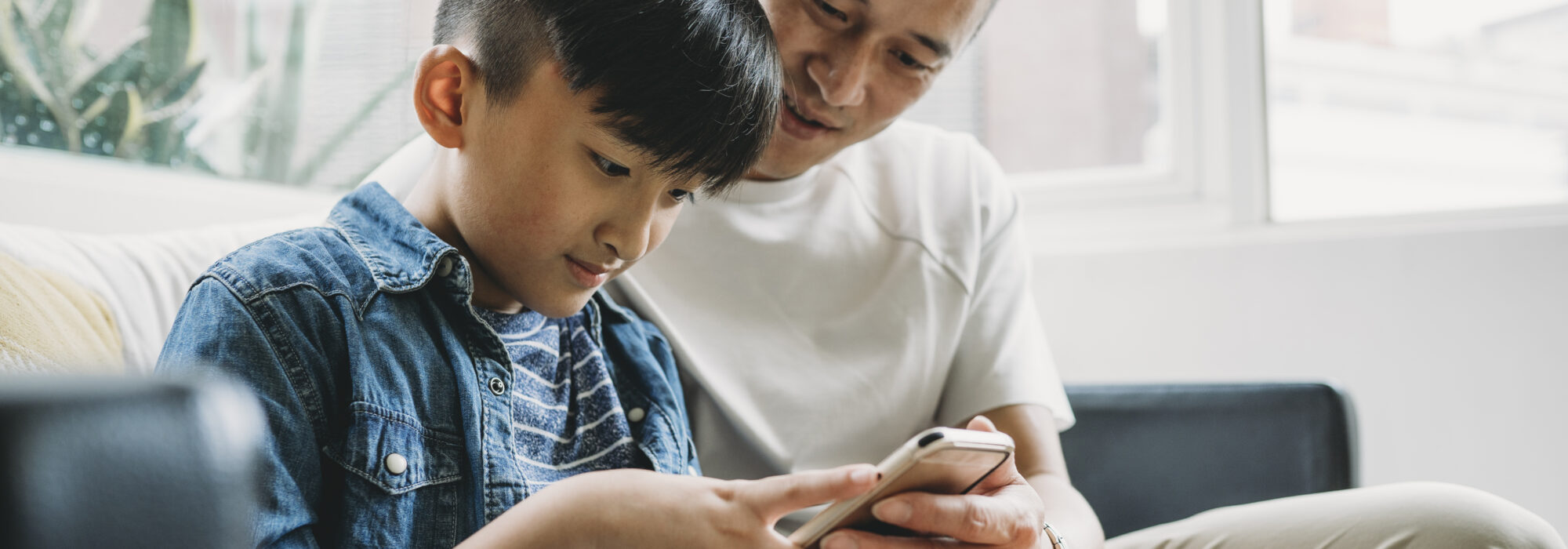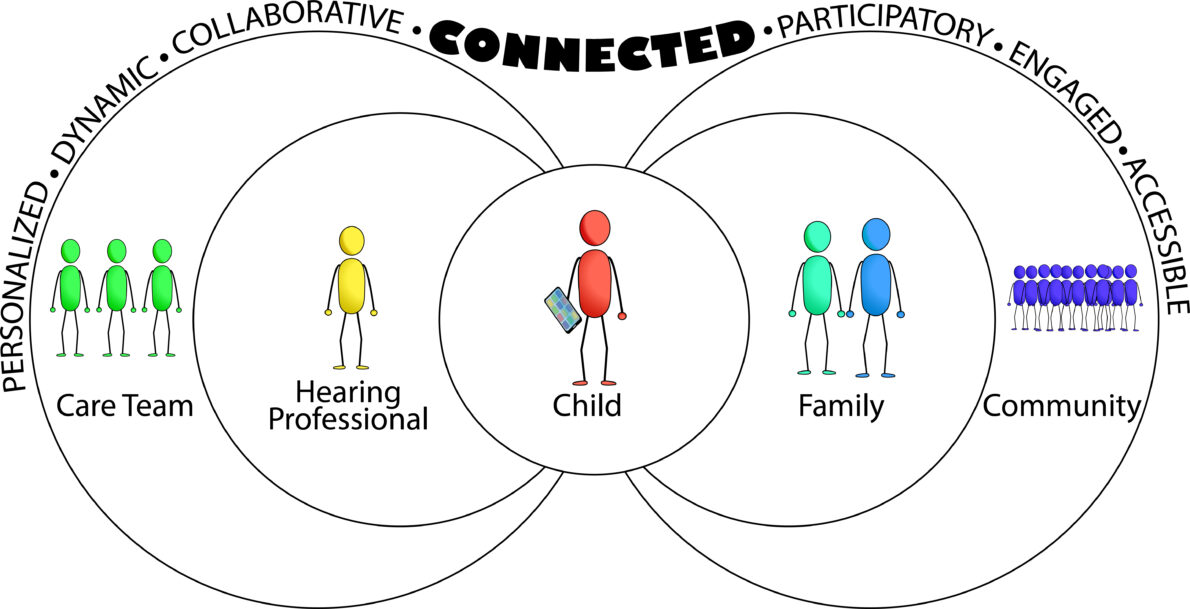
Using digital health to connect children and families to hearing care
Dr. Danielle Glista shares what a connected care model looks like and how using it could potentially help bring greater collaboration between you and your families.
The past decade has brought a rapid influx of technological innovation to hearing health care. This has allowed us to start envisioning the benefits of a connected care model – one that includes a wide array of digital hearing solutions (technologies, tools, and platforms) enabling proactive, personalized, and family-centered hearing care.
Through a family-focused lens
This care model brings opportunity for greater collaboration between providers and the recipients of hearing care.
Outside of the patient-provider dyad, we can now connect those integral to the care process via digital solutions. For example, multiple family members, including more than one parent, grandparents, siblings, and/or caregivers can connect virtually, despite where they are located.
Similarly, multiple health professionals, support personnel, and members of the child’s community of support can be connected to collaboratively contribute to care plans. Through a family-focused lens, digital health allows children with hearing loss and their families to connect to all members contributing to the hearing care journey, from a central position, and as active participants in the journey.

Child-friendly digital technologies are here
Throughout the COVID-19 pandemic many families experienced the ability to connect remotely to care through virtual models. This is, in part, due to improved videoconferencing technologies enabling important face-to-face patient-provider connections and continuity of care across many care types.
Recent research and development efforts have also focused on child-friendly technologies, which have expanded to smartphone apps connecting children to the hearing health care journey in various ways.
Examples of how digital health connects children and families to hearing care
- Children can now use apps in their daily lives to share information related to listening and communication needs1 and to self-adjust their hearing aids.
- Providers can remotely access information related to hearing screening and middle-ear function.2,3
- Advanced data sharing systems now offer more efficient ways to share personalized health information, with real-time interaction and store-and-forward solutions available.
- Personalized health information in this advanced digital health era extends beyond digital health records to include devices that can monitor and collect information from a child’s lived experiences, in-the-moment, and in situations of importance to that individual.
With this rich information, we gain the ability to tailor care plans to each child, based on their unique experiences, thus greatly improving clinical decision-making.
Potential benefits of digital health solutions, now and in the future
- Overcome geographical limitations
A meaningful “connection” between children, their hearing health, and those involved in the care process can now be achieved without geographical limitations.
- Gain important perspectives
Children and families bring unique and important perspectives to their care plan, they can offer individual experiences related to receiving health care within a system, and perspectives on the coordination and cooperation among various elements of their care.
- Engage children throughout their lifespan
A greater connection through digital health offers the potential to engage children in hearing health care at an early age and across their lifespan.
Although the benefits of apps continue to be studied and discussed, long-term acceptance as certifiable clinical tools will depend on ability to adhere to regulatory guidelines, their effectiveness at driving outcomes, and their integration into clinical workflow processes. This is just the start! The future of digital health is exciting and can, if implemented appropriately, connect families and children more closely to the hearing care journey.
We invite you to read a collection of articles related to eAudiology in the International Journal of Audiology, including an article by Dr. Danielle Glista and colleagues on this topic. You can access them here.
To read a previous blog article by Dr. Danielle Glista on what to consider when looking to get into eAudiology, you can find it here.
References
- Glista, D., O’Hagan, R., Van Eeckhoutte, M., Lai, Y., & Scollie, S. (2021). The use of ecological momentary assessment to evaluate real-world aided outcomes with children. International Journal of Audiology, 60(S1), S68-78. https://doi.org/10.1080/14992027.2021.1881629
- Eksteen, S., Launer, S., Kuper, H., Eikelboom, R. H., Bastawrous, A., & Swanepoel, D. W. (2019). Hearing and vision screening for preschool children using mobile technology, South Africa. Bulletin of the World Health Organization, 97, 672–680. https://doi.org/10.2471/BLT.18.227876
- Manus, M., van der Linde, J., Kuper, H., Olinger, R., & Swanepoel, D. W. (2021). Community-based hearing and vision screening in schools in low-income communities using mobile health technologies. Language, Speech, and Hearing Services in Schools, 52, 568–580. https://doi.org/10.1044/2020_LSHSS-20-00089
